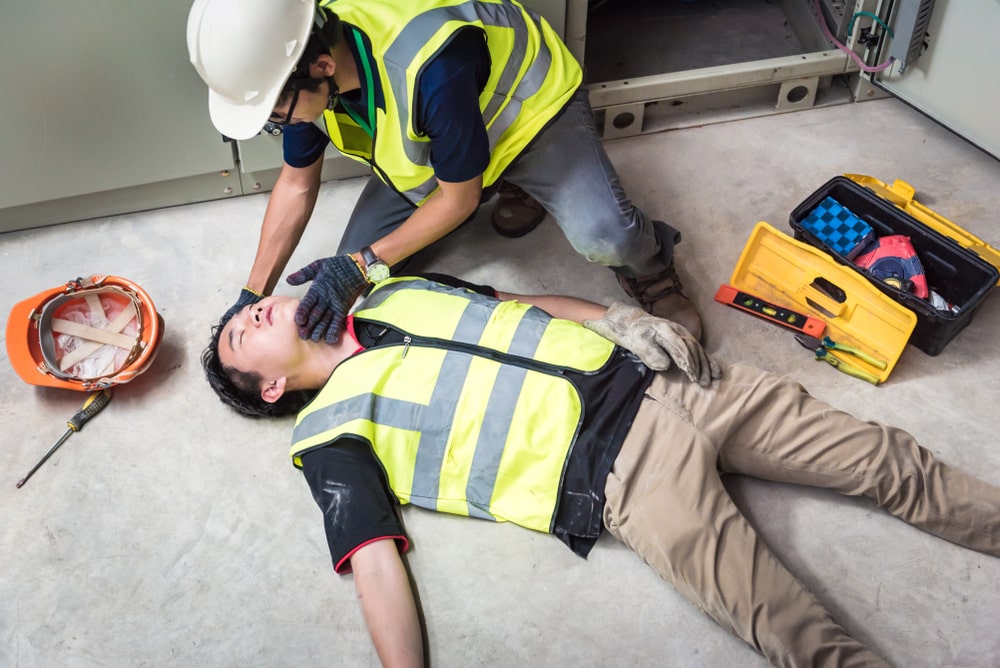Talking about potential emergency scenarios with children can be a tricky subject. On the one hand, you want to allow them to be kids and play without fear. On the other hand, you want to make sure they know what to do in case of an emergency. As adults, we are trusted with the responsibility of keeping them safe - whether it’s at home, at school, or on the playground. But what happens if the primary caregiver is unable to attend to an emergency?
The most important thing we hope you take from this article is that it’s never too early to teach children what steps to take during an emergency. Although younger children may not have the physical strength to perform CPR, it’s beneficial for them to recognize the signs of an emergency, what steps to take, and what not to do in an emergency. Here are some valuable tips on how to teach your child emergency first aid.
1. Use everyday examples
Minor incidents that happen in your day can be an opportunity for a teaching moment. When your child falls, gets a cut or a scrape, describing each step you’re taking helps them learn and ease their panic. Encourage them to take a deep breath and then narrate what you’re doing, “First, we’re going to wash the cut with clean water gently, and I’m going to apply pressure to stop the bleeding. Then, I’m going to apply this bandage to protect the cut.”
Taking an emergency first aid course will help you pass down the right knowledge to your child and ensure that you’re up to date with the latest protocols. Additionally, it’s important to make sure your child understands that if the cut or injury is serious, the best thing they can do is get the help of an adult.
2. Use play in your teaching
Talking about a serious accident or emergency can bring up anxiety for children, so we recommend using roleplay to keep it light. Engage them in the world of imagination and pretend by putting together a simple emergency kit with bandages, gauze, tape, cotton balls, and cloths. Include picture books relating to the subject or illustrate your own pamphlet with clear pictures.
Take turns playing doctor and patient and let them practice being the calm caregiver. Children learn best when they’re relaxed and playing, but it’s also important to be intentional about what your child is learning. Help them demonstrate their new skills and praise their achievements.

3. Have your child practice describing a situation
One of the most important things we can teach children is how to call 911 for assistance. The first thing to do is help them memorize the sequence of buttons on the phone while stressing how important it is never to call 911 for play.
If another adult is available, have them practice getting to them for help. If another adult is not available, practice different emergency scenarios. Have your child describe the situation in detail while pretending to talk to someone on the phone. Let them know to stay calm and assure them that once they call emergency services, help will soon be on the way.
This scenario is very common with stroke victims and can be the difference between serious brain damage or even death. Teach your child how to recognize that something is wrong and what to do if you or the caregiver is unresponsive. Again, the most important lesson here is to make sure your child understands getting the help of an adult if available and how to call 911 if there is no other person around to help.
4. Trust your instinct
You know your child best, and you know how much information they are ready to take. Remember, you can start small and gradually build on the basics at each developmental stage. From age four and up, children can practice:
- Putting ice on a swollen injury
- Applying pressure to stop bleeding
- Applying a cold towel to a burn
- Putting a blanket over a person in shock
Again, we recommend parents take emergency first aid training to become familiar with the above that will help them correctly guide their child.
5. Remind them of their limitations
Although young children are capable of understanding the basics of emergency first aid and CPR, it’s important to remind them that there are limitations to keep themselves safe. As you’re teaching your child how to respond to an emergency situation, be sure they know that it’s never safe to run into a burning building, run out into the road to save someone, or jump into deep water when someone is drowning. Remind children that, in very serious situations, their most important job is to get the help of an adult as quickly as possible.

